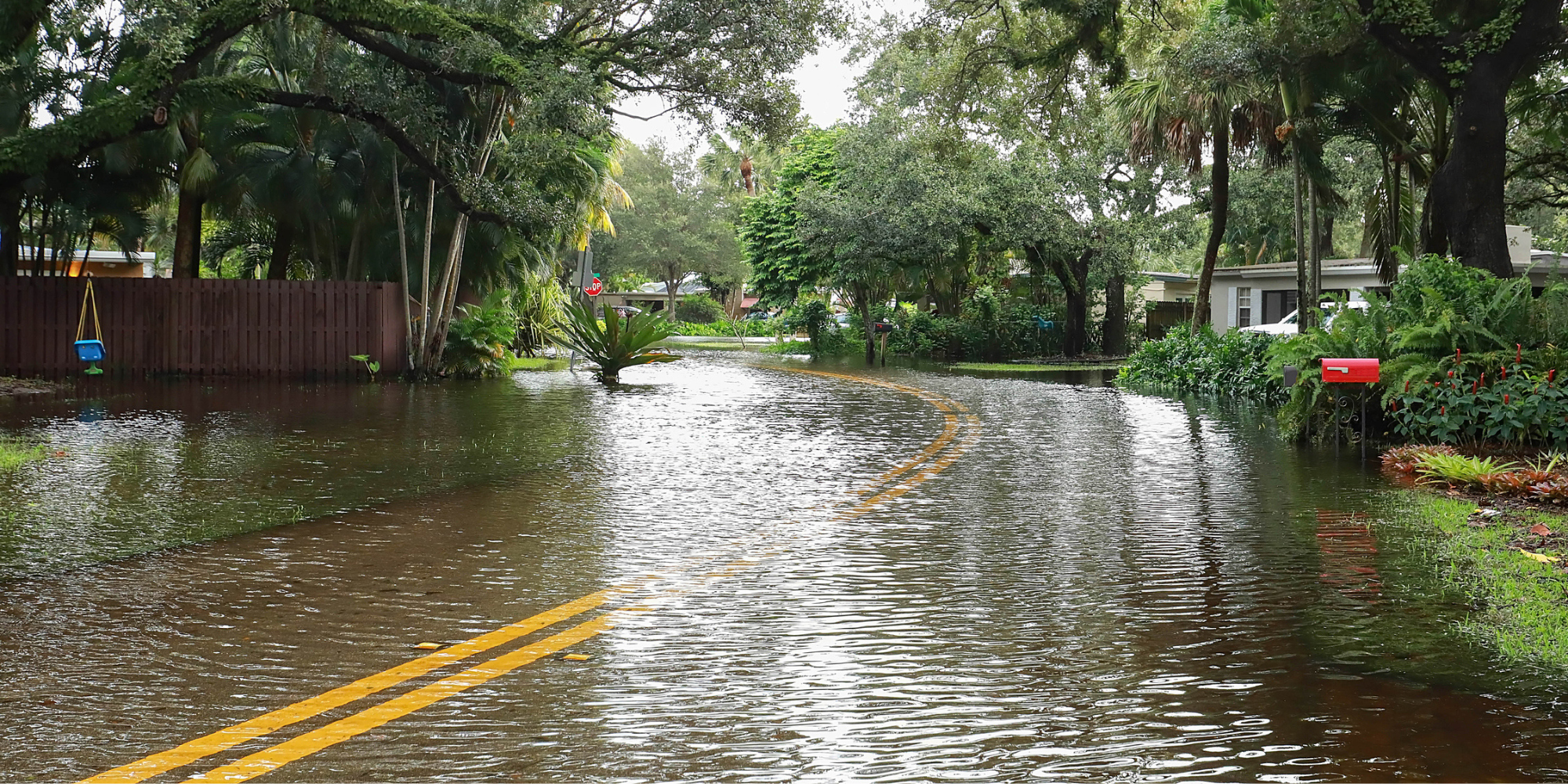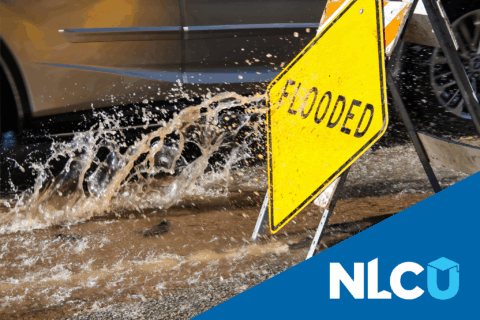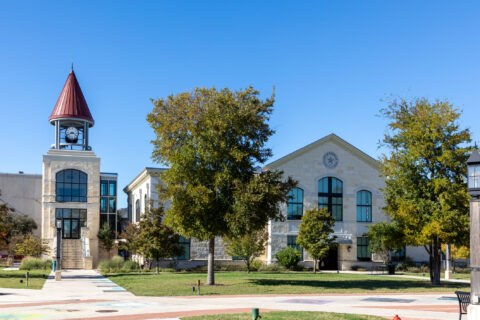In 2021, the United States faced 20 extreme weather and climate related disasters, with losses totaling $145 billion. As cities, towns and villages across America prepare for the summer season when forest fires, storms and hurricanes can test their local infrastructure, local elected leaders can use a new Bipartisan Infrastructure Law (BIL) funding grant program that allows them to make their transportation infrastructure more resilient to natural disasters. The Promoting Resilient Operations for Transformative, Efficient, and Cost-saving Transportation (PROTECT) program funding builds community infrastructure resilience in the face of extreme weather and natural disasters and will deliver $8.7 billion over the next four years to make transportation infrastructure resilient in our states and communities.
PROTECT Grant Funding Available
Cities, towns and villages have the opportunity to apply for $1.4 billion in competitive PROTECT grants that the U.S. Department of Transportation can award to local governments, Metropolitan Planning Organizations and other eligible entities. On April 21, the Biden Administration released both FY22 and FY23 funding totaling up to $848 million for the PROTECT Discretionary Grant Program Notice of Funding Opportunity (NOFO). The PROTECT funding is broken down between Planning Grants ($24 million), Resilience Improvement Grants ($175 million), Community Resilience & Evacuation Route Grants ($25 million), and At-Risk Coastal Infrastructure Grants ($25 million). Cities, towns and villages will have until August 18th, 2023, to apply for PROTECT.
If your city is not in the position of applying for a federal grant directly, your state is receiving PROTECT dollars automatically as formula funds, and each state has discretion with their approach to using them so you could reach out to inquire as to their plans and if your project may be considered under their funding. Additionally, states may transfer 50 percent of their technical assistance funds from their Surface Transportation Block Grant (STBG) funds to provide technical assistance for PROTECT grants so there is more capacity for states to assist local governments than previously. Municipalities in states that are very vulnerable to natural disasters may consider advocating for this approach to their state Department of Transportation offices.
Breaking Down PROTECT Grant Categories
Planning Grants
Cities, towns and villages awarded a planning grant will have 100 percent of the cost covered by the Federal government. Awardees can use planning grants for resiliency planning, predesign or develop data tools to simulate transportation disruption scenarios, including assessing vulnerable assets. They can be used to build technical capacity to assess vulnerabilities of surface transportation assets and community response strategies based on current and future conditions as a result of climate change. Lastly, they can be used for evacuation planning and preparation.
Resilience Improvement Grants
Municipalities with known vulnerable assets along surface transportation routes may want to consider Resilience Improvement Grants. These grants can be used to improve existing roadways to withstand one or more elements of weather events, natural disasters, sea level rise, flooding and wildfires.
Community Resilience & Evacuation Route Grants
These grants shall strengthen and protect evacuations routes that are essential during an emergency event. Projects can include resilience improvements, safety features for a safe evacuation, acquisition or evacuation routes, traffic management equipment or signage, and projects that provide access to critical destinations such as hospitals or major employment areas. If an existing evacuation route is not adequate municipalities can use this grant category to correct this.
At Risk Coastal Infrastructure Grants
Municipalities should consider applying to an At-Risk Coastal Infrastructure Grant if they want to strengthen stabilize, harden, elevate, relocate or enhance the resilience of highway and non-rail infrastructure that faces long-term risk of coastal flooding, coastal erosion, wave action, storm surges, or sea level rise. Non-rail infrastructure includes bridges, roads, pedestrian walkways, bicycle lanes, and associated infrastructure such as culverts and tide gates. Projects should reduce long-term infrastructure cost by avoiding larger future maintenance or rebuilding cost. They should also consider how the project will allow first responders to access coastal areas with people and how people will evacuate those coastal areas.
Eligible Facilities for the different grants
- Highway projects for assistance
- Public Transportation Facility or service eligible for assistance
- A facility or service for intercity rail passenger transportation
- A port facility, including a facility that connects a port to other modes of transportation.
Municipalities within each of the grant categories may use natural infrastructure with their projects as they connect to transportation improvements. For local leaders interested in these solutions check out NLC’s blogs on Investing in Local Water Infrastructure for a Resilient, Livable Future and Harnessing the Power of Nature-Based Solutions.
The Federal Highway Administration has two upcoming webinars on May 8 and May 11 on the NOFO for PROTECT. Local leaders interested in attending these webinars can register here.
Getting Ready to Apply
Assess your grant type
Cities, towns and villages may already know where their transportation vulnerabilities lie. They may have recently experienced a natural disaster such as a flood, hurricane or forest fire that disrupted transit systems and left vulnerable communities behind. If vulnerable assets are known, local leaders may want to consider Resilience Improvement, Community Resilience & Evacuation Route, or At-Risk Coastal Infrastructure grants. If a municipality has conducted a resilience study, which they should cite when applying for these grants.
For municipalities lacking resilience studies, Planning grants can be used to create one. These resilience studies will review transportation assets, assess their vulnerability and provide resilience-building solutions. Gathering data now, such as flood projections or sea level rise from climate change, can help make the application process easier.
State DOTs are working to start their formula PROTECT programs. Municipalities in states with a PROTECT formula program open to cities, towns, and villages may want to consider applying to PROTECT in this manner.
Identify projects using data
When applying for PROTECT grants, local elected leaders will want to prioritize key transportation infrastructure that is vulnerable to natural disasters and climate change. To get started local officials can check out U.S. Climate Resilience Toolkit, which includes vulnerability assessments, case studies and a social vulnerability index. There is also the National Oceanic and Atmospheric Administration’s (NOAA) Disaster and Risk map. Transportation infrastructure that services vulnerable communities should be highly considered, as PROTECT grants fall under the Biden administration’s Justice40 initiative. Local officials can use The U.S. Department of Transportation’s numerous tools or the Council on Environmental Quality’s Climate and Economic Justice Screening Tool (CEJST) to determine if a project area is in a disadvantaged community.
Begin engagement and follow the process
When writing a strong grant application, local leaders can begin by identifying key stakeholders who will need to be involved in the deployment of PROTECT grants. Key stakeholders should include departments of transportation, planning, permitting and inspections and/or sustainability, focusing on planners and engineers, private sector partners, community groups, regional organizations and emergency service providers. Local leaders may consider writing or joining a joint application in their region. When identifying community partners to work with, municipal leaders should seek to engage historically underrepresented communities that are more likely to be directly impacted by natural disasters and climate change.
Many federal grants require a workforce plan that promotes good paying local jobs. Local officials can view U.S. DOT’s Grant Application Checklist for a Strong Transportation Workforce and Labor Plan to get started.
Confirm your city’s unique federal identifier
Most cities have a point of contact in charge of their federal grant credentials. Starting April 4, 2022, the Data Universal Numbering System (DUNS) number, which has traditionally been used to apply for grants on grants.gov, was replaced with the Unique Entity Identifier (UEI). If your city, town or village is already registered with SAM.gov, a UEI number has already been assigned and is viewable at SAM.gov. If your municipality does not have a UEI number yet, U.S. agencies are encouraging entities to apply for a UEI number immediately in order to be eligible to apply for grants.
PROTECT Your Community
According to the National League of Cities’ recently-released report, nearly one in three Americans experienced climate-related impacts in 2020, and 2019 was the second wettest year in U.S. history, causing $6.2 billion in damage. PROTECT is a great opportunity to meet these challenges head on and address the physical preparations of your community as a good steward of your city resources. PROTECT also will have an equity impact – people with disabilities, economically disadvantaged households, the elderly, Black, Indigenous and People of Color (BIPOC) and other vulnerable populations often bear the brunt of climate change impacts. By applying for PROTECT grants, local government leaders can ensure their transportation infrastructure is resilient, safe and accessible to everyone.










